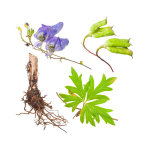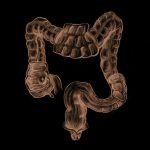The Ayurvedic Approach to Pain Management
Virender Sodhi, ND, MD
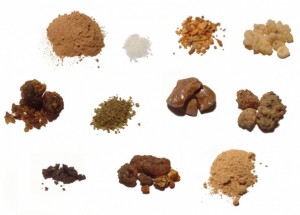 The Ayurvedic approach to pain management is a holistic one. When treating a patient with chronic pain, I always advise an integrated approach, and I look beyond the outward pain to discover the underlying source.
The Ayurvedic approach to pain management is a holistic one. When treating a patient with chronic pain, I always advise an integrated approach, and I look beyond the outward pain to discover the underlying source.
Often, chronic pain is caused by an inflammatory response within the body. Ayurvedic herbal treatments are effective for healing and controlling excess inflammation, but for long-term results, such treatments must be part of an integrative approach combining dietary changes, detoxification and therapeutic exercise.
The science of Ayurveda is based on balance. According to Ayurvedic understanding, health is based on the balance of an individual’s physiology (Doshas), digestive processes (Agni), tissues (Dhatus) and excretion (Malas). The person whose soul, senses and mind are content is considered to be healthy. The Ayurvedic approach seeks to restore not only physical, but mental, emotional and spiritual balance as well by using nutrition, yoga, meditation and breathing exercises in addition to herbs and supplements.
In my decades of Ayurvedic and naturopathic practice, I have treated many patients with chronic pain issues resulting from arthritis, osteoarthritis (OA), fibromyalgia, dermatitis, asthma, colitis, Crohn’s disease, autoimmune diseases and cancer. Many of these patients have benefited from the array of wonderful herbs Ayurveda offers to control inflammation at all levels.
Inflammation is the body’s normal response to conditions such as infection, toxins and trauma. Under normal conditions, once the negative event is over, the body will produce an anti-inflammatory response to restore balance. In cases of chronic pain, however, the body is not able to regulate the inflammatory response. The result is chronic imbalance – and chronic pain.
Ayurvedic Herbs
Many Ayurvedic herbs address ongoing excess inflammation. Among these are Boswellia serrata, proven in clinical studies to ease the pain of OA; the prized spice Curcuma longa; Zingiber officinale, known in Ayurveda as the “universal medication”; and the powerful herb Withania somnifera. Taken alone or in combination with other herbs, these natural pain relievers address chronic inflammation without the serious side effects many pharmaceuticals can cause. Following is a sampling of my clinical experience using these herbs for pain relief and control.
Boswellia Serrata
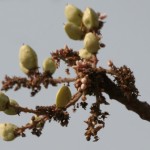 This herb is unrivaled as a treatment for OA. In a 2008 double-blind, placebo-controlled study, Boswellia serrata produced very rapid results in patients with OA, many of whom were bedridden. Seventy-five OA patients were included in the study which used a novel Boswellia serrata extract enriched with 30% 3-O-acetyl-11-keto-beta-boswellic acid (AKBA), which exhibits potential anti-inflammatory properties by inhibiting the 5-lipoxygenase enzyme. The patients received either 100 mg (n = 25) or 250 mg (n = 25) of the extract daily or a placebo (n = 25) for 90 days. In both groups receiving either 100 mg or 250 mg of extract the patients’ pain scores and functional abilities were markedly improved, and blood levels of cartilage-degrading enzymes decreased (Sengupta et al., 2008). In another study, all of the OA patients treated with Boswellia reported reduced knee pain, increased knee flexion and increased walking distance. Swelling was also reduced considerably (Gupta et al., 1998).
This herb is unrivaled as a treatment for OA. In a 2008 double-blind, placebo-controlled study, Boswellia serrata produced very rapid results in patients with OA, many of whom were bedridden. Seventy-five OA patients were included in the study which used a novel Boswellia serrata extract enriched with 30% 3-O-acetyl-11-keto-beta-boswellic acid (AKBA), which exhibits potential anti-inflammatory properties by inhibiting the 5-lipoxygenase enzyme. The patients received either 100 mg (n = 25) or 250 mg (n = 25) of the extract daily or a placebo (n = 25) for 90 days. In both groups receiving either 100 mg or 250 mg of extract the patients’ pain scores and functional abilities were markedly improved, and blood levels of cartilage-degrading enzymes decreased (Sengupta et al., 2008). In another study, all of the OA patients treated with Boswellia reported reduced knee pain, increased knee flexion and increased walking distance. Swelling was also reduced considerably (Gupta et al., 1998).
I have used Boswellia with great success to treat patients with OA, rheumatoid arthritis (RA) and psoriatic arthritis. With holistic combinations of herbal therapy and Panch Karma detoxification (a detox system that includes specialized massages with medicated oil, vomiting or modified fasting, purging, cleansing enemas, restorative enemas, blood letting and blood donation, and rejuvenation), nutritional changes and yoga, I have been able to take many patients off of prescription pain medications, including steroids.
Curcuma longa
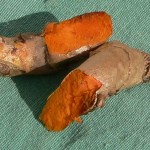 My personal belief is that Curcuma longa is responsible for the low cancer rate in India. Curcuma longa is a powerful antioxidant, anti-inflammatory, anti-carcinogenic, anti-microbial and hepatoprotective spice. I have used it with remarkable results in treating cardiovascular and gastrointestinal disorders.
My personal belief is that Curcuma longa is responsible for the low cancer rate in India. Curcuma longa is a powerful antioxidant, anti-inflammatory, anti-carcinogenic, anti-microbial and hepatoprotective spice. I have used it with remarkable results in treating cardiovascular and gastrointestinal disorders.
As a pain reliever, Curcuma longa is potent in treating every aspect of inflammation. Various laboratory studies have demonstrated that its active principle inhibits the action of inflammatory agents, including phospholipase, lipoxygenase, cyclooxygenase 2 (COX-2), leukotrienes, thromboxane, prostaglandins, nitric oxide, collagenase, elastase and others (Srimal, 1997).
COX-2 inhibitors such as celecoxib and rofecoxib were once touted as anti-inflammatory drugs without the side effects. However, many patients took these drugs for years before learning that they are associated with heart disease. Curcuma longa, on the other hand, has a much broader spectrum of anti-inflammatory activity than these drugs, and without the side effects. Curcuma longa has been used as a culinary spice in many areas of the world for centuries, and its safety for human consumption is well established.
As a side note, Curcuma longa is a wonderful skin rejuvenator. In India, it is used in traditional wedding ceremonies to enhance the beauty of the bride and groom. Twenty-five years ago, after my wife, Rekha, and I were married, she developed a severe case of acne on her face. A preparation of Curcuma longa and neem, another Ayurvedic herb, cleared the acne completely in two months, and she did not get it again. She used Curcuma longa again with success when her skin became chapped, dry and irritated during pregnancy.
Withania Somnifera
 Withania somnifera is an important Ayurvedic rasayana – a rejuvenating tonic that enhances longevity and may be used over a long period of time without side effects. Clinical studies have shown Withania to relieve the pain of RA. When the herb was given to a group of RA patients for a period of four weeks, more than half of them experienced pain relief. Some of these patients were completely free of pain and swelling after the herbal treatment (Anbalagan and Sadique, 1981).
Withania somnifera is an important Ayurvedic rasayana – a rejuvenating tonic that enhances longevity and may be used over a long period of time without side effects. Clinical studies have shown Withania to relieve the pain of RA. When the herb was given to a group of RA patients for a period of four weeks, more than half of them experienced pain relief. Some of these patients were completely free of pain and swelling after the herbal treatment (Anbalagan and Sadique, 1981).
Withania is one of the Ayurvedic herbs that offers promise as an alternative to steroids. Its naturally occurring steroidal content is much higher than that of hydrocortisone. I always choose Withania for patients with a need for steroids like hydrocortisone or prednisolone. Withania always comes to the rescue with flying colors, allowing such patients to reduce or eliminate their need for steroids.
Zingiber Officinale
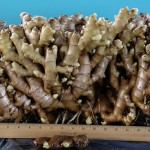 The medicinal value of Zingiber officinale is so wide reaching. I remember it as Grandma’s answer to everything – from stomachaches to headaches and joint pain.
The medicinal value of Zingiber officinale is so wide reaching. I remember it as Grandma’s answer to everything – from stomachaches to headaches and joint pain.
Zingiber is a powerful anti-inflammatory and antioxidant. It was studied in patients with RA in two clinical trials. In one trial, seven RA patients reported pain relief, increased joint mobility, decreased swelling and reduced morning stiffness (Mascolo et al., 1989).
The second clinical study treated 28 RA patients, 18 OA patients and 10 patients suffering from muscular discomfort with powdered Zingiber at high doses over periods of up to 2-1/2 years. Seventy-five percent of both the RA and the OA patients reported relief from pain and swelling. All 10 patients with muscular discomfort experienced relief. The patients who took higher doses of Zingiber experienced the fastest results. In another study, Zingiber relieved migraine headache (Mustafa and Srivastava, 1990).
Comiphora mukul
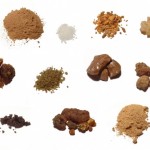 In the West, Comiphora mukul is best known as a cholesterol-reducer. In Ayurveda, however, it has long been used to treat inflammatory conditions like RA, OA and psoriatic arthritis.
In the West, Comiphora mukul is best known as a cholesterol-reducer. In Ayurveda, however, it has long been used to treat inflammatory conditions like RA, OA and psoriatic arthritis.
In a recent study in southern California, 30 OA patients, both male and female, were treated with 500 mg of Comiphora extract three times a day over a period of 1-2 months. The patients showed significant improvements in their symptoms, including pain and mood, and no side effects were observed (Vyas and Shukla, 1987).
Combining Therapies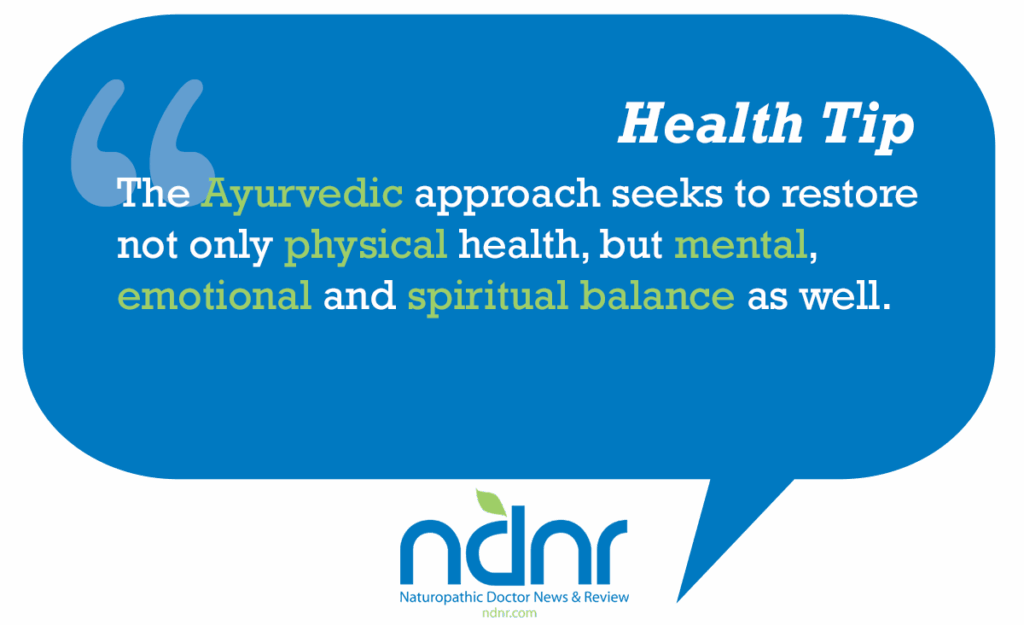
I have treated hundreds of patients with conditions including RA, OA, psoriatic arthritis, polymyalgia rheumatica, fibromyalgia and asthma using the herbs discussed in combination with nutritional changes, exercise, yoga, meditation and the Panch Karma detox program. I have been able to take patients off medications like methotrexate, etanercept and prednisone after 3-16 months of Ayurvedic treatment. Even though my patients show tremendous improvement, I always advise them to stick to their nutritional program and lifestyle changes to ensure a lifetime of great health. I usually use combination formulas of standardized extracts of Comiphora with Withania, Curcuma, Boswellia and Zingiber for a synergistic anti-inflammatory effect.
Some practitioners report skin rashes when Comiphora preparations are used. I have used the herb for 30 years, and none of my patients have had this problem. I believe the rashes are caused by an impurity in raw Comiphora, which must be removed before the herb is used.
It is my belief, and my experience confirms, that Ayurvedic herbs offer tremendous potential for treating chronic pain. News reports today are full of stories about the horrible addictive hazards of prescription pain medications like oxycodone and other narcotics. Non-addictive pharmaceuticals like celecoxib and rofecoxib have also proven to be dangerous. In light of these developments, more and more patients are turning to alternative therapies for their pain issues.
Ayurveda’s comprehensive approach offers the best overall solution for chronic pain sufferers. Gentle exercise regimens, nutritional therapies and detoxification, along with the extraordinary Ayurvedic herbs described in this article, provide a lifestyle makeover that can offer the chronic pain sufferer a healthy and pain-free future.
 Virender Sodhi, ND, MD (Ayurvedic) is an internationally respected Ayurvedic and naturopathic physician, and one of the first to practice Ayurvedic medicine in the U.S. He received his MD (Ayurveda) after completing six years of medical training in India. He came to the U.S. in 1986 to share Ayurveda as part of a cultural exchange program. In 1988, Dr. Sodhi graduated from Bastyr University.Dr. Sodhi treats patients from all over the world at the Ayurvedic and Naturopathic Medical Clinic in Bellevue, Wash. He also lectures extensively throughout the U.S. and other countries, and is the founder of Ayush Herbs Inc.
Virender Sodhi, ND, MD (Ayurvedic) is an internationally respected Ayurvedic and naturopathic physician, and one of the first to practice Ayurvedic medicine in the U.S. He received his MD (Ayurveda) after completing six years of medical training in India. He came to the U.S. in 1986 to share Ayurveda as part of a cultural exchange program. In 1988, Dr. Sodhi graduated from Bastyr University.Dr. Sodhi treats patients from all over the world at the Ayurvedic and Naturopathic Medical Clinic in Bellevue, Wash. He also lectures extensively throughout the U.S. and other countries, and is the founder of Ayush Herbs Inc.
References
Sengupta K et al: A double blind, randomized, placebo controlled study of the efficacy and safety of 5-Loxin for treatment of osteoarthritis of the knee, Arthritis Res Ther Jul 30;10(4):R85, 2008.
Gupta I et al: Effects of Boswellia serrata gum resin in patients with bronchial asthma: results of a double-blind, placebo-controlled, 6 week clinical study, Eur J Med Res Nov 17;3(11):511-4, 1998.
Srimal RC: Turmeric: a brief review of medicinal properties, Fitoterapia 68:483-93, 1997.
Anbalagan K, Sadique J: Influence of an Indian medicine (ashwagandha) on acute-phase reactants in inflammation, Indian J Exp Biol Mar;19(3):245-9, 1981.
Mascolo N et al: Ethnopharmacologic investigation of ginger (Zingiber officinale), J Ethnopharmacol Nov;27(1-2):129-40, 1989.
Mustafa T, Srivastava KC: Ginger (Zingiber officinale) in migraine headache, J Ethnopharmacol Jul;29(3):267-73, 1990.
Vyas SN, Shukla CP: A clinical study on the effect of Guggulu in rheumatoid arthritis and osteoarthritis, Rheumatism 23(1):15-26, 1987.




